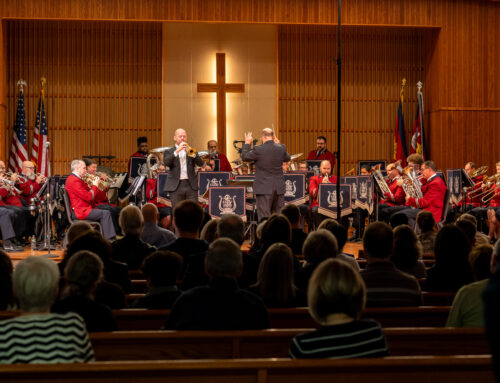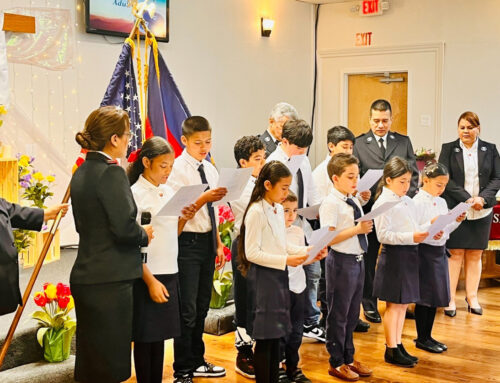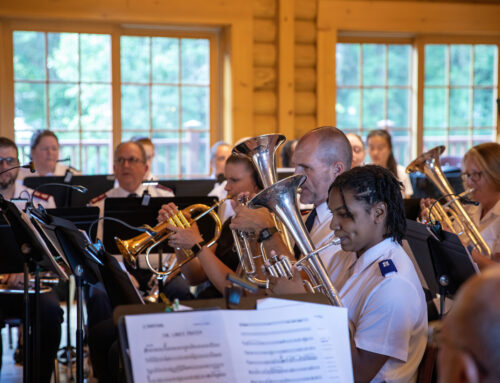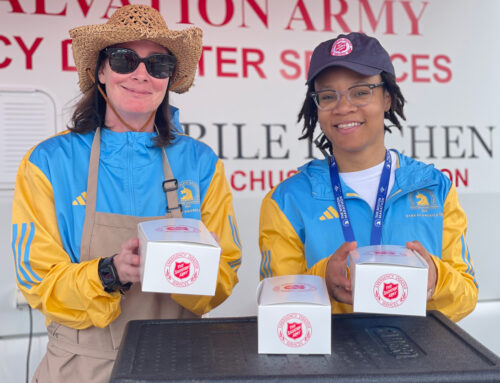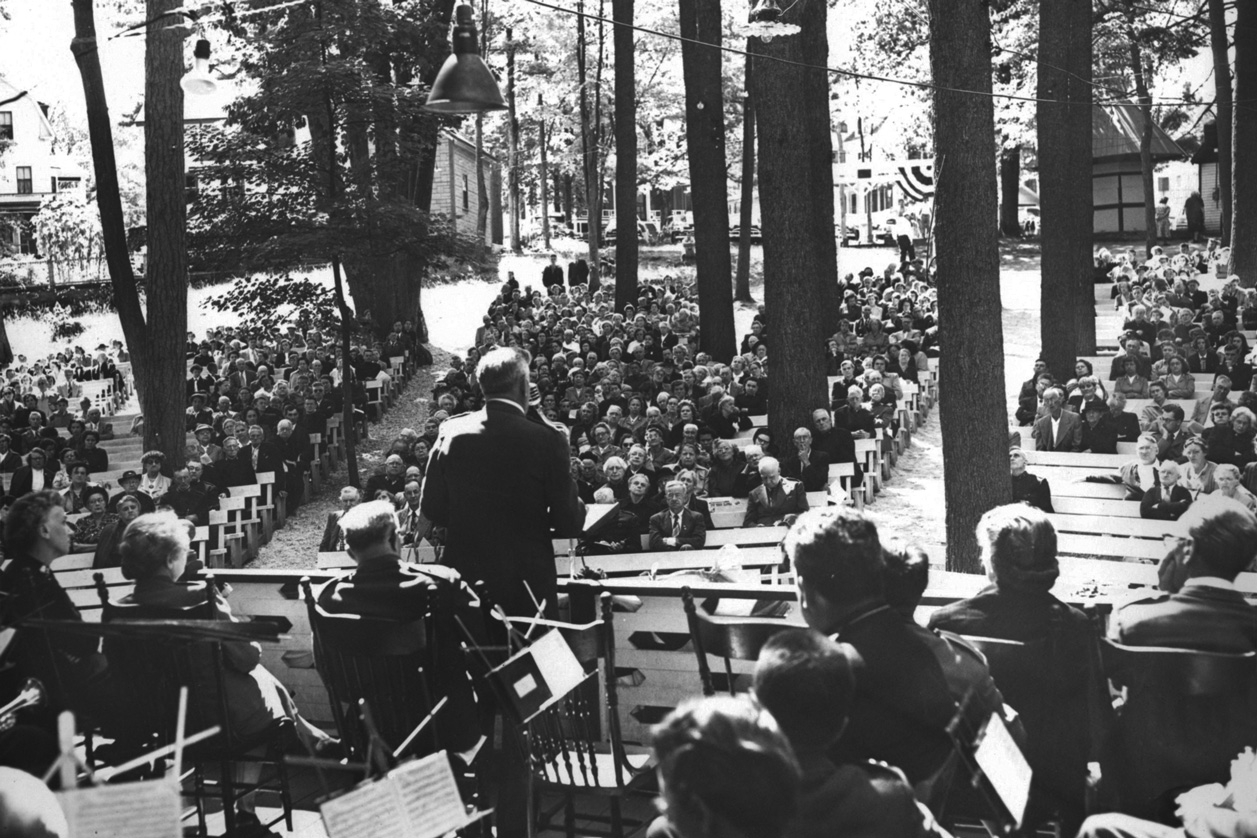
150 Years of Old Orchard Beach Camp Meetings
by Robert Jeffery
Considering the recent revival at Asbury University, an event that seemed to be spontaneous in its nature and surprising to many, perhaps we are now more open to the possibility of a new spiritual awakening and what it might look like. Salvationism was birthed out of two great movements that came together; British evangelical Methodism, and American transatlantic revivalism. Revival, renewal, and regeneration, are intrinsic to who we are as a Salvation Army and nowhere have these forces come together more so than at the Old Orchard Beach camp meetings held in Maine.
These meetings are of such longstanding in our Eastern Territory that it’s tempting to take them for granted, or to think of them as just another event on the calendar. We know it simply as “O–O–B” and talk about it in such familiar ways. But the camp meetings at OOB did not come about just so people could have a fun beach vacation; it was a chosen location for people to gather and encounter the Holy Spirit.
Reaching the unchurched
Camp meetings came to us from the American Methodist tradition as a way to reach unchurched people on the great frontiers of the country. In open fields, or wooded terrain, with a makeshift altar and pulpit, people would gather by the hundreds, and thousands, to hear itinerant ministers proclaim the Gospel. Camp meetings were held annually in the warmer months, and people would come with their own tents and provisions with the plan to stay one or two weeks. The people that came may have been Christian, but due to the remoteness of where they lived, might not have had an established place to worship regularly. This was their one chance a year to hear live preaching, to sing with other believers and to take part in corporate prayer. Many people not claiming to have any faith also came to the meetings, perhaps out of boredom (at first) but found themselves gloriously saved. Camp meetings were a wonderful aspect of the Second Great Awakening (1790s–1840s), and they are the point of origin for the OOB story.
A time of healing
In 1873, a group of American Methodist ministers led by Rev. Israel Luce, selected the current grounds (encompassed by today’s Seaside Pavilion) as a place to hold religious meetings. It was originally inhabited by apple orchards and was first referred to as “the grove.” Though decades after the period known as the Second Great Awakening, camp meetings were still taking place across the nation. This time though, it wasn’t only people on the frontiers who took part but people from America’s growing cities, fueled by population booms due to the industrial revolution. It was a nation still dealing with the trauma of the Civil War (1860–1865), and and in the era of Reconstruction. The spiritual life of the people also needed healing.
What characterized those early camp meetings was a wonderful spirit of ecumenism as Christians from various denominations came together. What was originally established by the Methodists, was soon attended by Presbyterians, Baptists, Congregationalists, and the National Temperance Camp Meeting Association. In 1887, an entirely new denomination, the Christian and Missionary Alliance (CMA) church by A.B. Simpson, was founded at that year’s OOB Camp Meeting. The OOB Camp Meeting Association became a sort of interdenominational group that shared the meeting grounds and worked together to bring world class speakers on holiness and sanctification.
Breaking new ground
The Salvation Army made its first appearance at OOB in the summer of 1885. The first Army speakers to preach in the grove were Staff Captain Annie Shirley (mother of Salvation Army pioneer Eliza Shirley) and Commissioner Frank Smith, the national commander of our still fledgling movement. An article from the 1890 War Cry, in bold headline reads,
“A tremendous Crowd in Old Orchard, ME., Camp Ground. Commissioner & Mrs. Ballington Booth, Major Sully, and the Maine Officers lead Camp–Meetings in the Pine Tree State. 5,000 people in the afternoon.”
In fact, during the height of the summer meetings, as many as 10,000 people arrived on the Boston and Maine Railroad Station (and you thought OOB is crowded today).
So, what were those early Salvation Army meetings like? In the Heritage Museum archives, we find pictures of happy Salvationists in their full uniform. Being covered from head to toe in heavy wool cloth in the heat of summer is definitely a commitment to The Army and its methods. Nevertheless, these Salvationists are worshipping together among the trees of the grove, giving rapt attention to the speaker on the platform (back then a large gazebo), or listening to the music of the band.
Famous Salvation Army personalities like Evangeline Booth and Samuel Logan Brengle would have been a regular presence at OOB. Brengle would often go up and pray with people who sought sanctification at the altar. A popular musical duet one would have heard for many years were the two singing sisters known as the Worcester Twins – Annie Brewer and Elizabeth White.
A bold investment
As time went on, the use of the campgrounds by other denominations began to wane. In 1952, The Salvation Army made the monumental decision to buy the land from the Camp Meeting Association. Since then, the camp meetings became an exercise in full–throated Salvationism, drawing the best speakers and teachers from around the Army world. Every Salvation Army general, beginning with General Higgins, has come to OOB, as well numerous brass bands and songster brigades. For many years, divisional bands and music groups would take responsibility for providing the music for one of the services ensuring local participation. In more recent times, Christian contemporary artists such as Sandi Patti and Michael W. Smith have graced the stage.
Forty–six years after taking over the campgrounds, The Salvation Army made another historic investment in OOB with a complete renovation of the site, transforming the simple seating among the pine trees and wood chip strewn floor into a multimillion–dollar modern facility that still maintains its outdoor, open–air appearance. In 1998, the new structure called the Seaside Pavilion opened. Former U.S. President and First Lady, George and Barbara Bush presided over the event.
The Salvation Army has held camp meetings at OOB every year since 1885, with the historic exception of 2020 and 2021, when the annual gathering was suspended due to the global COVID–19 pandemic. Although the camp meetings themselves are only once a year, Salvationists have had a regular presence in the popular seaside community since 1932 through the witness of the Old Orchard Beach Corps and in the town itself.
A new awakening?
Today this outward focus on the town and tourists is carried out through a nightly Pier Festival, involving music, arts, dance, and attractions with a Gospel centered message.
As we reflect on the present and future of the Old Orchard Beach camp meetings, let us be open to the leading of the Spirit. Let’s come to OOB, not out of a sense of obligation or conversely, because it’s an enjoyable place to visit. Rather, let’s come expecting a new work of the Holy Spirit in our own personal lives. Maybe the fires of revival, renewal, and regeneration will fall as it did in days of old. When God moves in new and surprising ways, be it at OOB or elsewhere – let us be ready to follow.
Read more from the latest issue of SAconnects.

